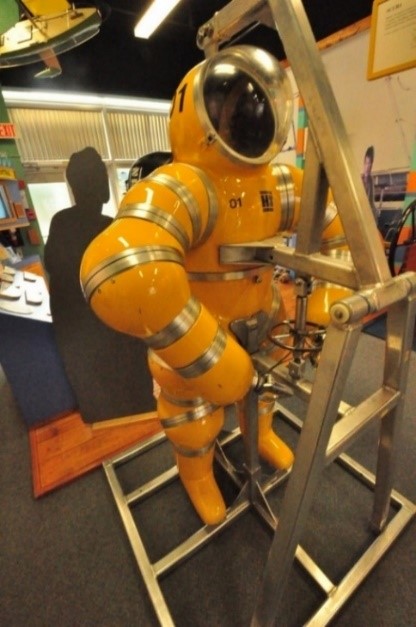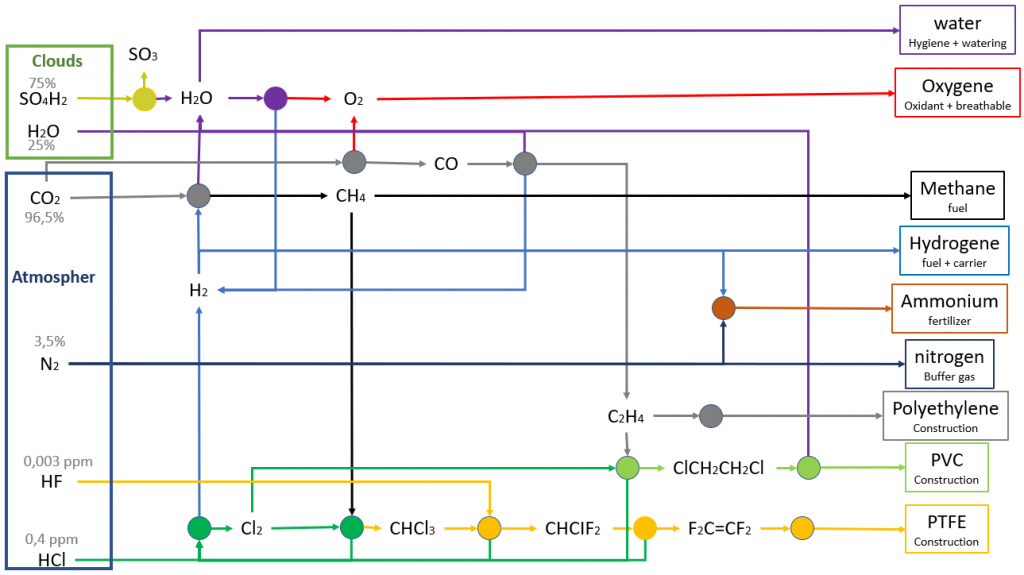This report focuses more on the technical possibility of a manned mission on Venus than on on-site operations. Among the various elements one could imagine, We can quote:
– Materials laboratory experiments and geological, biological, chemical and Weather.
– Aerial drones and/or habitable aircraft of greater or lesser range, in order to make atmospheric measurements at a distance from the base.
– Robots remotely operated surface area from the base, capable of bringing back samples for laboratory analysis. They will have to be able to survive 5 days surface conditions, so that we can go back to the next flyby of the base.
It is important to note that to talk more specifically about what is likely to be the most emblematic, the surface suit. It is likely that the general public considers that the conquest of Venus requires inhabited surfacing activities. Given the complexity of the system, there is no guarantee that this will part of the first manned mission. But even at the limits of technology this system is not technically impossible and will allow for the return of the earthly technology. From what we can imagine today, such a spacesuit will have a carbon-ceramic structure covering thermal insulation Important. Cooling will occur with a water reserve that will evaporate little by little to inflate a balloon that will bring the suits up (in fact, hydrogen goes from gaseous to critical under 25 km altitude and loses its lift). With this operation, it is impossible to hold more a few hours on the surface. So at first a hydrogen aircraft will climb the suit several kilometres above the base to take (thanks to the high wind) on the latter. In addition, the temperature lower water supply will cool. The suits then fall into free fall and deploy the empty carrying balloons (which will be filled with water vapour on the ascent) like parachutes to slow down before the Contact. During the surf activities, the base will catch up be intercepted during the ascent.

Next to this material for the study of Venus, some of the scientific research will be devoted to testing the techniques destined for colonization. One example is the use of greenhouses for food production probably in a closed loop, like Melissa. It is there is also a need to develop production systems for construction in situ. For this, the atmosphere of Venus offers a wide variety elements to produce the PTFE essential for acid protection sulphuric, PVC for structural elements, and all the elements essential for life (water, oxygen, nitrogen). To finalize preparations colonization, it is possible to pick up metal elements starting with aluminum to improve structures and silicon and iron for electronic elements. A key point of the colonization is the in situ production of energy sources, for this it can be Imagine:
– Mineral solar panels produced with aluminum and surface silicon.
– Organic solar panels produced with atmospheric elements.
– Carrying balloons concentrating light like a solar oven.
– A system aerothermia using cables of several km to take advantage of the temperature difference between the atmosphere layers.
– Systems traction sails or wind turbines attached to structures positioned at different altitudes to take advantage of the wind speed gradient.

The material science will be transported by atmospheric cargo modules (the term cargo is used to avoid confusion with cargo ships used to refuel the cyclers). At least two cargo modules will be sent to Venus at every manned mission. In addition to the scientific material that represents 2/3 of the load, they will also carry the spare parts of the basics and food supplies.
| Freight module | Note | Mass (kg) |
| Balloons | 200 | |
| Hydrogen Lift | 500 | |
| Structure | 750 | |
| Systems Various | 250 | |
| Freight | With design reserve | 5 100 |
| Total | 6 800 |